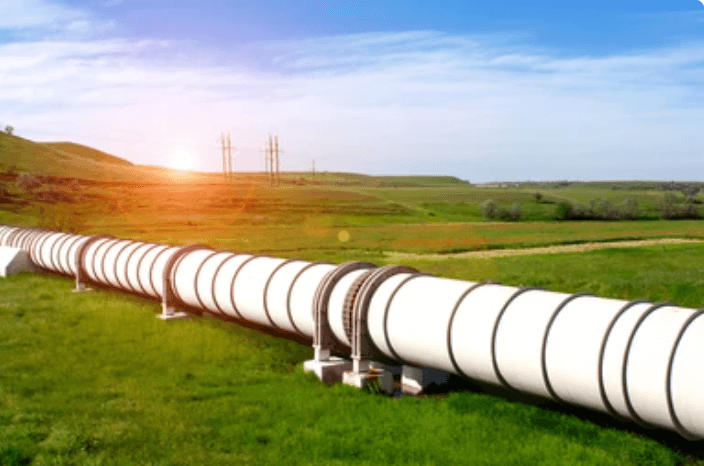While natural gas is a universal commodity, its prices exhibit significant variations worldwide due to the intricate web of infrastructure required for transportation. In this blog, we embark on a journey to unravel the complexities surrounding natural gas prices and the crucial role played by infrastructure networks.
The invasion of Ukraine by Russia served as a vivid demonstration of the repercussions of segmentation. The reduction in pipeline flows from Russia to Europe by 80 percent since mid-2021 had a profound impact, leading to a staggering 14-fold increase in gas prices on the continent, reaching record levels in August 2022. The surge in prices was also observed in globally traded liquefied natural gas (LNG). However, in the United States, LNG prices only tripled, remaining significantly lower than those in Europe and Asia, which were several times higher. This stark contrast in price dynamics highlights the divergent impacts of the geopolitical situation on different regions.
The pricing disparities and the insulation of the US from global gas-market shocks are rooted in the unique characteristics of gas extraction and transportation. Historically, the US market was closely linked to crude oil prices as gas was predominantly a byproduct of oil drilling. However, over the past decade, this artificial integration has been unraveling, primarily due to the surge in shale gas production. With the US surpassing Russia as the world's largest gas producer in 2012 and the establishment of export terminals, it became easier to access markets beyond North America.
The technology involved in liquefying and shipping natural gas also plays a crucial role in pricing. Before it can be transported by sea or road, natural gas needs to be converted into liquefied natural gas (LNG), which is approximately 600 times smaller in volume. The infrastructure for liquefaction, exporting, importing, and regasification requires significant investment, leading to fixed LNG export capacity in the short term. As a result, regional shocks, such as Russia's invasion of Ukraine, can cause divergent movements in regional prices.
Following the invasion, Europe turned to LNG as a substitute for Russian gas imports, with US shipments emerging as a key alternative. Despite the fixed US LNG export capacity, the temporary price premium for gas in Europe during the spring and summer of 2022 prompted Asian customers of US LNG to redirect their cargoes to sell in Europe. This dynamic showcases the flexibility and adaptability of LNG trade, enabling rerouting to meet shifting market demands.
Long-term delivery contracts with US companies typically employ US pricing formulas. This allowed Asian customers with such contracts to purchase gas at a lower cost from the US and redirect tanker ships at sea to sell the cargo at the significantly higher European spot market prices.
Despite the growing reliance on LNG as a substitute for Russian pipeline gas, European LNG import capacity was not a limiting factor in market integration. European import terminals had ample spare capacity before Russia's invasion of Ukraine, and the addition of mobile floating storage regasification units further strengthened Europe's infrastructure to accommodate higher volumes of LNG imports. Conversely, the United States and other gas producers are currently exporting near their maximum capacities. Expanding global LNG export capacity is necessary to restore European and Asian prices to historically normal levels in the long term. In the United States, these capacities are expected to continue growing, building upon the rapid gains seen since the first LNG export terminal opened in 2016.
Significant expansion initiatives currently underway in the United States, Africa, the Middle East, and other regions are set to boost global LNG export capacity by approximately 14% by 2025. Additional planned projects have the potential to bring export capacity to around 1 trillion cubic meters, equivalent to roughly a quarter of global gas consumption in the previous year. However, securing financing for the construction of new terminals can present significant challenges. Companies typically require 15- to 20-year contracts to secure bank financing for these projects. Terminal construction costs typically range from $10 billion to $15 billion, with completion times spanning two to four years. Projects without long-term sales contracts face uncertain timelines and may not come to fruition.
The development of expanded LNG export capacity in the United States and other gas-producing nations could play a vital role in establishing well-balanced global gas markets across different regions. As advanced economies progressively rely on weather-dependent renewable energy sources like wind and solar power, there will be instances where additional natural gas is required to meet peak power generation demands. By integrating global gas markets and enhancing infrastructure, prices can effectively drive demand and supply responses within larger, more interconnected markets. This integration serves as a safeguard against supply shocks, providing a buffer to global energy markets.
Ironically, while the shift towards renewable energy aims to reduce reliance on fossil fuels, the intermittent nature of renewable sources often necessitates natural gas as a backup fuel. Thus, the expansion of LNG export capacity, enabling the availability of natural gas, becomes a pivotal element in supporting the stability and resilience of global energy systems.
For more information, please write to us at sales@magnifysearch.com
Published June 6, 2023 By Magnifysearch


.png)